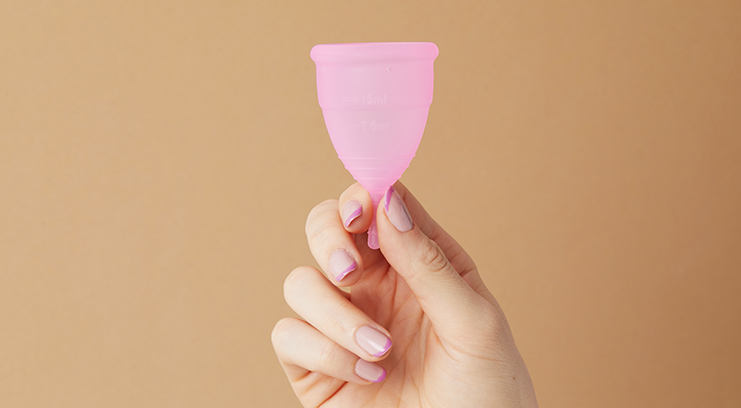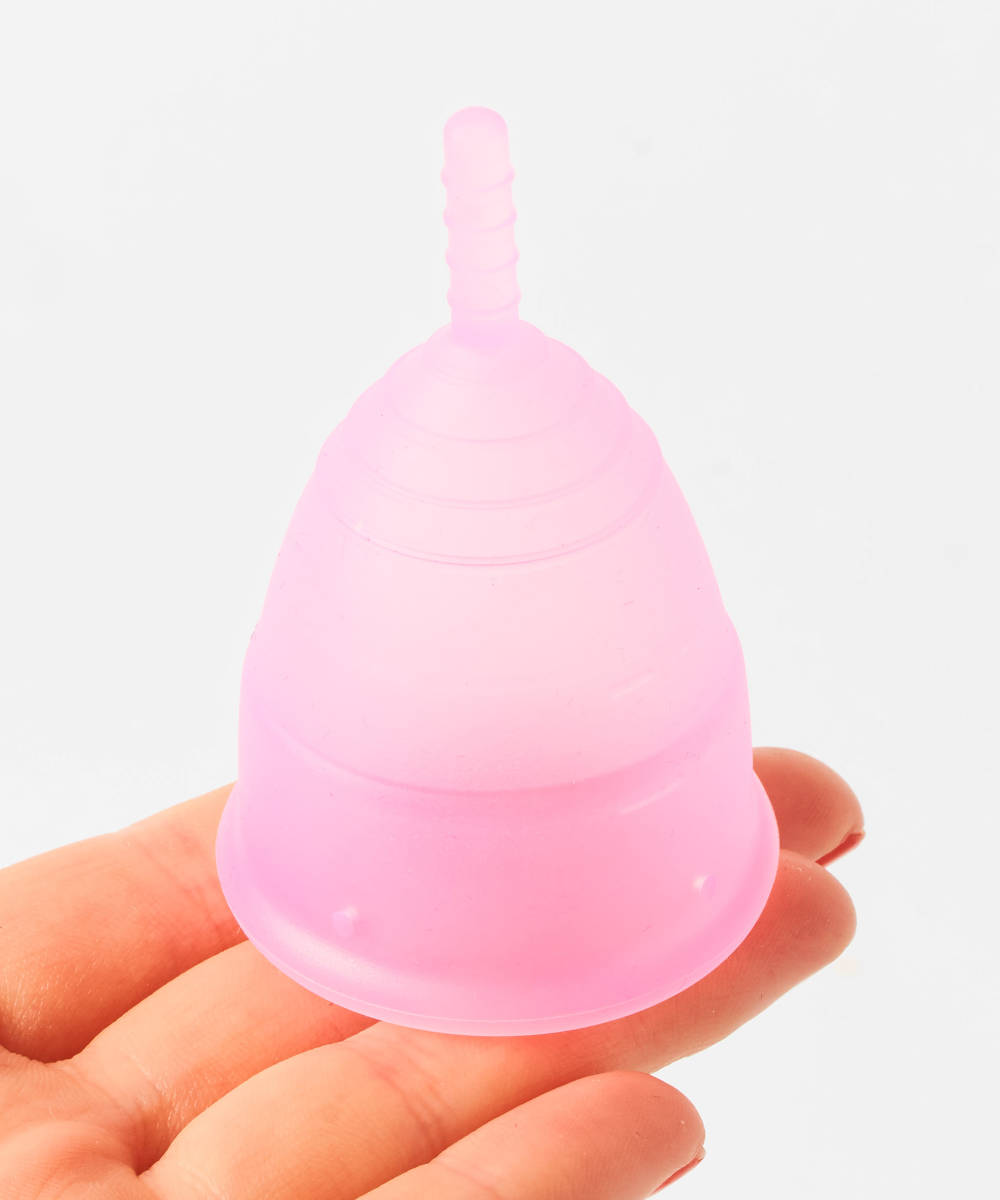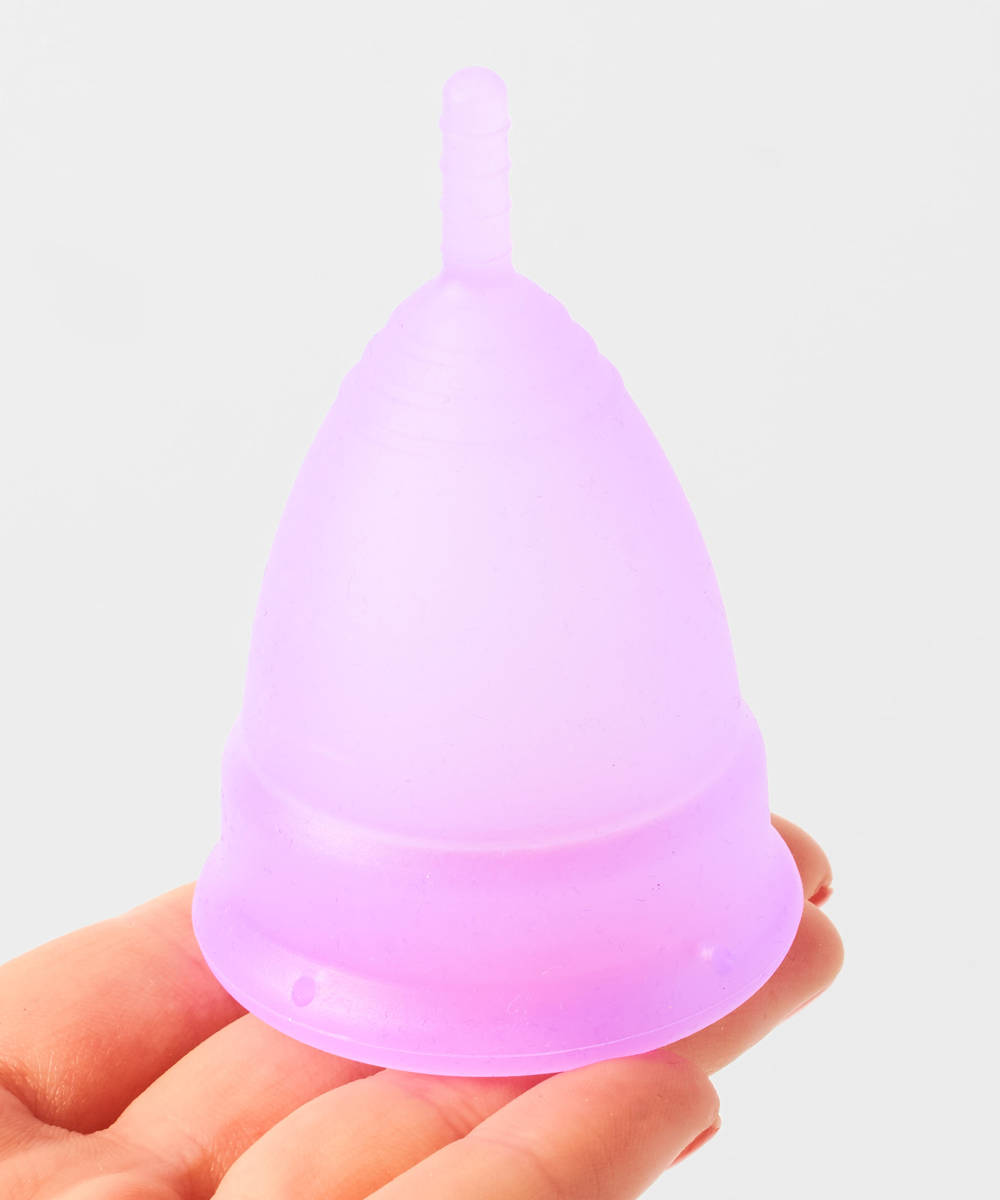As one of many people trying to cut down on the amount of waste I am sending to landfill, I was horrified to learn that tampons, pads and panty liners amount to 200,000 tonnes of unrecycled waste EVERY YEAR. When your period arrives, along with cramps, oily skin and mood swings, the environment might not be the first thing on your mind, but here’s an easy swap you can make to reduce waste and save money: A menstrual cup.
My relationship with my period is pretty textbook: I had my first one in year 7 and it’s been arriving on the reg ever since. Sanitary pads seemed to be standard issue, and I didn’t mind them. However, I played loads of sports at school and didn’t want to miss out on swimming lessons because of my uterus – it seemed totally unfair! One day by the lockers, my friend was telling me about the wonder of tampons and how it didn’t even feel like you were wearing anything. I was intrigued and she gave me one to try.
I didn’t get on with tampons straight away. I was scared to insert them all the way in and would sometimes panic if I couldn’t get them out easily. Initially, I kind of gave up on them because they were stressing me out and I thought they were too much effort. I thought there must be something wrong with me because everyone else found it so easy! Luckily, I gave them another go and, when I got used to them, never went back to wearing pads. Now I could (and have) insert a tampon with my eyes closed, in a tiny tent at a festival, on a moving train… It’s weird to think I ever struggled.
A menstrual cup is all the things I love about tampons but without the throw-away aspect. They’re long-wearing and you don’t really notice you’ve got one in. You can go swimming, go to the gym and wear whichever pants you’re feeling that day. But it did take some getting used to.
My initial concerns were:
– What if I can’t get it in?
– What if I can’t get it out?
– If I take it out in the bathroom at work or a while out in bar etc., won’t it be a total mess and I’ll come out of the cubicle with blood all over my hands?
Putting it in
This was actually sooo much easier than I thought it would be. You squeeze the cup into a little ‘C’ shape and insert it the same way you would a tampon. After it’s in, just feel it to make sure it has opened fully and move it around until it’s comfortable. If there is still some of the plastic stem sticking out when the cup is fully inserted, you can take it out and use clean scissors to cut the right amount off the end.
Taking it out
I’m not going to lie to you, it wasn’t easy on the first go. But, like my first experience with tampons, I committed to persevere. You have to gently squeeze the bottom of the cup to release some of the suction that has been created by the blood and then pull it out by taking hold of the bottom of the cup. Relaxing (if you can!) helps, and practise definitely makes it easier. Think how proud David Attenborough would be of you saving the oceans from plastic and try again!
Taking it out in a public place
You can keep the cup in for up to 12 hours, so on days where I knew I’d be out for longer than that, I took some wipes in my bag to get any blood off my hands before coming out of the cubicle. Pretty easy really.
Overall, the things I was stressing about didn’t really matter, and I am fully converted to cups! There were even a few things that I wasn’t expecting that I really liked. You can see how much blood comes out each day, which is really interesting and I think it’s important to learn more about your body and tune in to how you might feel on different days. I knew that a one-buy cup would save me money but it was convenient too, no more estimating how many tampons or pads you have at home or trudging out the shops to buy more when it’s the last thing you want to do. It’s a transition that takes some time, but the benefits are huge – for you and for the planet.



